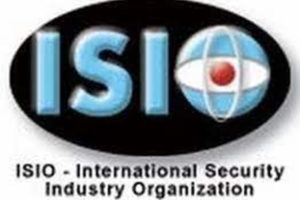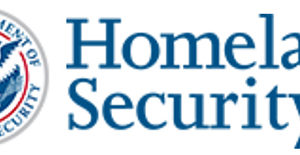Category: Health & Social Care
Health & Social Care
What the security industry does now will be judged by the CBRN professionals, the health community and the public

The CBRN (chemical, biological, radiological or nuclear warfare) sector are mostly made up of academics and professional practitioners that research and consider the above- mentioned threats.
For nature disasters, the governmental related body has their academics and manpower that takes full responsibility for servicing security, medical, the feeding and housing the population because they are paid for it through taxes.
For Biological Threats, the governments for specific reason use the military and police function on a macro level will be involved in managing specific protocols on the ground. However, it is the private security industry which is way larger than the military and police in some countries that will play its part on the ground.
Actually, the two bodies that play an important role is the health community that set protocols (infection testing, social interactions and hygiene) for biological threats and it is the security industry that rolls the health protocols out besides manages the implementation on the ground.
However, the security industry does more. The security industry adds security protocols to the mix because there are issues relating to tools (technology and equipment) that are used, the behaviour of the people and the crime related to the threats, being the threat itself and the outcome of the threat being the economic meltdown.
It is virtually impossible for the military and police to manage the health protocols, investigate the amount of crime and type of new crime in this scenario besides managing the numbers of people involved.
The CBRN community comprehend the fact that there are millions of private security practitioners on the ground that are actually doing the job of taking temperatures, managing the flow of people and ensuring hygiene criteria are met. Therefore, they realize that it is the private security industry (psi) is the largest force on the ground to limit the collateral damage, as it is, the psi that also has the equipment and skilled manpower to do such.
This current mutating biological threat has taught some lessons to some that bothered to be present and relevant, and the flip side, is that some in the security industry that do not realize that they are actually doing biological threat security.
Now based on the recent experiences, the private security industry has researched the issues related to this pandemic and thoroughly investigated specifics taking into consideration various issues.
When 911 happened, the security exhibitions grew huge in size because of two reasons. Firstly, at the same time the IP (Internet Protocol) technology began to display their wares and all technologies ran onto the market with their solutions, be it biometrics, IP access control and IP driven CCTV, etc., which was mostly geared towards counter terror.
When COVID-19 began, once again the manufacturers ran onto the market with thermal imaging technologies which some did not comply with the department of the health criteria. Yes, the health community have got protocols relating to taking the temperature of people and have also explored the criteria for using thermal imaging. Unfortunately, there are brands that do not confirm to the standards out of ignorance to the factual criteria and also there are some that provide misinformation about their capabilities.
But - it is the security industry that went through this scenario before during 911 which brought about laboratories to test brand performance of emerging technologies and equipment. This means that the protocols for managing a biological threat and using technology or equipment must confirm to the health department besides labs that check brand performance.
The health community has set protocols for social distancing but has not realized that the population are not sheep. The security industry knows that the behaviour of people can be extremely aggressive and volatile. Having said such there are security practitioners that themselves have not acknowledged that their team on the ground are on ground zero where the staff are more at risk than medical teams such as nurses or doctors.
In a hospital the medical teams know who is sick and who is not. They then have protocols to dress according to the threat and apply the 'dress-code' using specific protocols. They have been trained in such. On the ground, the security practitioners have no idea of who is sick and who is not sick. They handle people that are shouting and perhaps pushing others around without out any form of medical grade protection or the full complement of protection gear that is used by ICU wards.
The protocols for the managing people in security is by layering specific staff with certain character traits or skillsets to ensure a safe environment for the public and themselves. Security companies that are not using protocols place their client's customers at risk besides their own staff. When customers avoid going to a site, then the client loses revenue. This is not about loss prevention but more so profit protection. Furthermore, new crime and increased numbers of criminals erodes the profits of a site, besides impacting once again the profits of a site.
There is also crime related to the threat that causes issues, such as, theft of oxygen bottles or the reselling of oxygen using old bottles (organized crime, gang crime or entrepreneurial street venders) that could contain black fungus in the tubes or valves that is responsible for a 50 percent mortality rate. Never-the-less the lack of oxygen simply causes ciaos which could increase infection rates because of people fighting over oxygen or mass 'hysterical' riots when people fear that they will not obtain oxygen. The private security industry is involved in all aspects as one can fathom from the above, and the list of high-risk targets and motivations that drive issues are far too numbersome to list in this article.
The CBRN teams may suggest in the future certain steps to take but at the end of the day - it will be the private security industry that will roll it out and manage it on the ground.
If the Security Industry does not stand together and use the same protocols that fit standards and compliance criteria - then it will not be able to limit the level of collateral damage as it should with a mutating biological threat.
When the security industry does take action then it will earn the trust and respect from the CBRN community, the Health Community and the Public at Large.
ISIO |International Security Industry Organization & CAPSI (Central Association of Private Security Industry) representing +7 million practitioners) call on all stakeholders to participate alongside on mission.
Recommendations for measures to prevent hospital fires
The European Commission’s Joint Research Centre (JRC) issued a series of recommendations to help prevent the hospital fires associated with medical oxygen needed for Covid-19 severely ill patients, from electrical maintenance to administrative measures and largely spread training and guidance on prevention and risk management strategies for oxygen hazards.
Since the outbreak of the pandemic in March 2020, at least 36 incidents of hospital fires associated with intense oxygen use have been found to have occurred in various countries around the world, causing the deaths of over 200 people and injuring many more.
The majority of the dead and injured were patients extremely ill with the novel Coronavirus and others were their health care providers. Most deaths resulted directly from the fire but there were also several deaths from patients deprived of oxygen because of the event.
In comparison, up until 2020, the media shows an average of just over one such event per year since 2011.
According to the JRC recommendations, the strategies to prevent and mitigate the fire risk in intensive care units should evolve around three main elements:
• Guidance on oxygen therapy for Covid-19 and other diseases needs to identify specific prevention measures that can reduce the risk of oxygen-enriched environments in these settings;
• All hospitals should establish a risk management strategy for oxygen hazards led by hospital management, involving all staff, including healthcare workers, maintenance, housekeeping and administration;
• As part of this policy, all hospitals should track the number of patients having medical gas treatment and, when elevated, an appropriate fire risk management policy should be applied.
The hospitals should use as examples strategies developed for chemical process safety to manage flammable and explosive atmospheres. The management procedures should involve medical and non-medical staff, and prevention and emergency preparedness should take into account potential intensive care unit fires.
Governments call for more public and private investment in disaster prevention and risk reduction
Building Trust in the Digital Era: ENISA boosts the uptake of the eIDAS regulation
Universal Health Services lost $67m to ransomware attack
How artificial intelligence can help transform Europe’s health sector
DHS Awards $1.5M to Small Business for First Responder Emergency Alerts Technology Development


